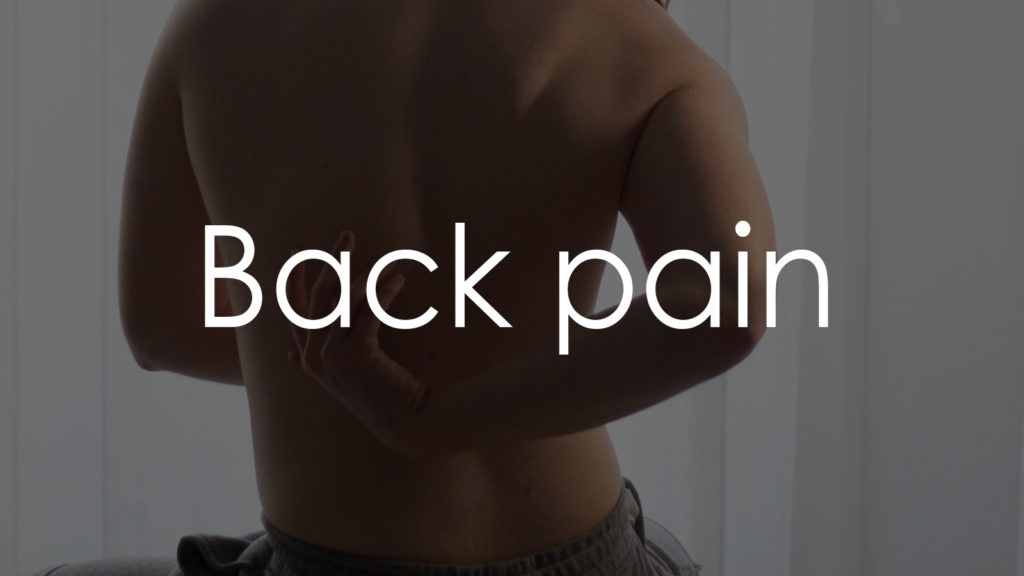Back pain is a widespread issue that affects people of various ages, significantly impacting daily activities and quality of life. It can range from a dull, constant ache to a sudden, sharp sensation that leaves the individual unable to move. While back pain can develop without a specific cause that a healthcare provider can identify, understanding the common triggers and underlying conditions can aid in management and prevention.

Causes and Possible Diseases
The causes of back pain are multifaceted and can include:
- Muscle or Ligament Strain: Heavy lifting or sudden awkward movements can strain back muscles and spinal ligaments, especially if the individual is in poor physical condition.
- Bulging or Ruptured Disks: Disks act as cushions between the bones (vertebrae) in the spine. The soft material inside a disk can bulge or rupture and press on a nerve, causing back pain.
- Arthritis: Osteoarthritis can affect the lower back. In some cases, arthritis in the spine can lead to a narrowing of the space around the spinal cord, a condition called spinal stenosis.
- Skeletal Irregularities: Conditions such as scoliosis, a curvature of the spine, can lead to back pain, typically in adolescence.
- Osteoporosis: The spine’s vertebrae can develop painful fractures if the bones become porous and brittle.
- Chronic Conditions: Such as fibromyalgia and inflammatory diseases like ankylosing spondylitis.
When to See a Doctor?
Most back pain gradually improves with home treatment and self-care, usually within a few weeks. However, it’s important to see a doctor if back pain:
- Is Severe and Doesn’t Improve with Rest: Pain that is persistent and severe, especially after resting, might indicate a more serious condition.
- Spreads Down One or Both Legs: Especially if the pain extends below the knee, which could indicate sciatica.
- Causes Weakness, Numbness, or Tingling: In one or both legs, which could signal damage to the spinal cord.
- Is Accompanied by Unexplained Weight Loss: Which can indicate a serious medical problem.
- Occurs with New Bowel or Bladder Problems: Such as incontinence or difficulty urinating, which could suggest a neurological issue.
- Is Accompanied by Fever: Which could indicate an infection.
- Follows a Fall, Blow to Your Back, or Other Injury: If you’re older or have osteoporosis, this can indicate a spinal fracture.
Prompt and accurate diagnosis is crucial for effectively treating back pain and addressing any underlying conditions. Treatments can vary widely, from physical therapy and medication to more invasive procedures for serious conditions. Recognizing when to seek medical advice is key to preventing complications and ensuring a return to normal activities as quickly as possible.
Diagnostics
Effective diagnosis of back pain typically involves a combination of the following approaches:
- Medical History and Physical Examination: Gathering detailed information about the nature of the pain, any activities or injuries that may have preceded it, and a physical examination to assess mobility, reflexes, muscle strength, pain intensity, and location.
- Imaging Tests:
- X-rays: Can reveal bone fractures or signs of osteoarthritis.
- MRI or CT Scans: Provide detailed images of bone, muscle, ligament, and disk issues, and can detect herniated disks or problems with blood vessels, tissues, or tumors.
- Blood Tests: Might be used to determine if inflammation or infection is the cause of the pain.
- Bone Scan: In rare cases, to detect bone tumors or compression fractures caused by osteoporosis.
- Nerve Studies (Electromyography, EMG): Can confirm nerve compression caused by herniated disks or narrowing of the spinal canal (spinal stenosis).
Treatment
The treatment of back pain is highly dependent on the cause and the intensity of the pain:
- Self-care and Home Remedies:
- Initial treatment often includes rest, applying heat or ice, over-the-counter pain relievers, and gentle stretches.
- Medications:
- Depending on the severity, doctors may prescribe NSAIDs, muscle relaxants, topicals, or in more severe cases, opioids (for a short duration under close supervision), and antidepressants for chronic low back pain.
- Physical Therapy:
- A physiotherapist can devise a personalized exercise program to increase flexibility, strengthen the back and abdominal muscles, and improve posture.
- Injections:
- For persistent pain, corticosteroid injections may be an option to reduce inflammation around the nerve roots.
- Surgery:
- Typically considered only when other treatments have failed and if there is evidence of structural problems that are likely to improve with surgery, such as herniated disks or spinal stenosis.
- Alternative Therapies:
- Some individuals find relief through acupuncture, massage, yoga, or chiropractic treatments.
Conclusion
Back pain is a common complaint with a wide range of potential causes, from minor strains to more serious conditions. Accurate diagnosis is key to determining the most effective treatment strategy. While many instances of back pain can be managed with non-invasive treatments and self-care, it’s crucial to seek medical attention for persistent, severe, or progressively worsening pain. By adopting a proactive approach to back health, including regular exercise, proper lifting techniques, and maintaining a healthy weight, many people can prevent or alleviate back pain. However, when back pain does occur, understanding the available treatments and when to seek medical advice can help ensure a quick return to comfort and normal activity.